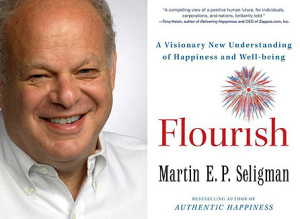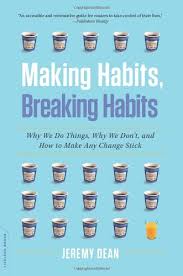Science shows that kindness is its own reward
By Due Quach, Founder of Calm Clarity
September 2, 2015
The City of Philadelphia is declaring Oct 27, 2015 (the 333rd anniversary of the founding of Philadelphia by William Penn) as A Day Of Kindness to honor the visits of Pope Francis on September 26-27 and the Dalai Lama on October 26-27. The 30-day period between these visits will be filled with programs and activities to spread kindness throughout the city. The organizers have asked me to explain the science of kindness. The following is an initial draft.
Ever wonder if the popular saying, “It is better to give than to receive,” is actually true? Recent studies across many fields show that the answer is yes.
1. Givers are star performers
The impact of altruism on career achievement has been the focus of research by Adam Grant, a professor at the Wharton School of Business, who observed that most people at work operate as takers, matchers, or givers. “Whereas takers strive to get as much as possible from others and matchers aim to trade evenly, givers are the rare breed of people who contribute to others without expecting anything in return.” Grant’s research revealed that many of the most successful people across many industries are givers. By probing deeper, Grant found that givers who have learned how to protect themselves from being exploited tend to accumulate an enormous amount of social capital over the long-term and even inspire the many people they help to pay it forward and give. Matchers, who make up the vast majority of people, have a natural tendency to reward givers with new opportunities and punish takers. In the book “Give and Take,” Grant builds a strong case that giving is actually a solid strategy for success.
In a separate study, Donald Moynihan at University of Wisconsin-Madison demonstrated a positive relationship between altruism in the workplace and happiness by following up with participants in the Wisconsin Longitudinal Study of more than 10,000 Wisconsin high school graduates in 1957. He found that individuals in their mid-30s who rated helping others in their work as important said they were happier with their life when surveyed again almost 30 years later. The data showed that altruists in the workplace are happier than their fellow employees. Moynihan shared: “Our findings make a simple but profound point about altruism: helping others makes us happier. Altruism is not a form of martyrdom, but operates for many as part of a healthy psychological reward system.”
2. Doing good is good for your health
Over the last several decades an explosion of research on the science of well-being has shown that altruism actually benefits the giver. Stephen Post, a professor at Stony Brook University, who summarized this body of research in 2005, concluded that “altruistic (other-regarding) emotions and behaviors are associated with greater well-being, health, and longevity.”
Post cited a longitudinal research study led by Stephanie L. Brown at the University of Michigan titled, “Providing Social Support May Be More Beneficial Than Receiving It.” The study examined the relative contributions of giving versus receiving support to longevity in a sample of 423 older married adults over a period of 5 years. Post explains, “Each couple was asked what type of practical support they provided for friends or relatives, if they could count on help from others when needed, and what type of emotional support they gave each other.” The analysis showed that the risk of mortality for people who provided no instrumental or emotional support to others was twice as high as for people who helped spouses, friends, relatives, and neighbors. Helping and supporting others had cut the risk of dying by half.
Post also referred to a study conducted by Kathleen Hunter & Margaret Linn at the University of Miami School of Medicine in the early 1980s. The study looked at retirees above 65 years of age, comparing those who volunteered with those who did not. The results showed that retirees who volunteered had “significantly higher degree of life satisfaction, stronger will to live, and fewer symptoms of depression, anxiety, and somatization.” Post explained that these findings have been consistently confirmed in a number of subsequent studies on altruistic activities among older adults. According to Post, “Giving help was more significantly associated with better mental health than was receiving help.”
3. How altruism benefits us physiologically
The benefits of altruism are connected to its role in mitigating the stress response and shifting people out of negative emotional states. One explanation for the underlying physiological mechanisms at work is that altruistic behavior is associated with increased levels of oxytocin and improved functioning of the vagus nerve. Oxytocin, also known as the “cuddle hormone” is released by social bonding and is believed to reduce levels of cortisol, known as the “stress hormone.” The release of oxytocin is regulated by the vagus nerve.
The vagus nerve connects the brain to internal organs such as the heart, lungs, stomach, and intestines, and is also involved in speech, eye contact, facial expressions and the ability to tune into people’s voices. The vagus nerves plays a key role in the parasympathetic nervous system, which brings the body back into homeostasis after it goes into ‘fight-or-flight’ mode. The function of the vagus nerve is measured by a concept called “vagal tone” which is determined by using an electrocardiogram to measure heart rate variability. People with higher vagal tone can relax and recover faster after a stressful event. Prolonged stress decreases vagal tone, thus, increasing a person’s susceptibility to chronic disease.
Dacher Keltner, director of the Greater Good Science Center at Berkeley, explains in his book, “Born to Be Good,” that people who have very high vagal tone, whom he calls “vagal superstars,” tend to display high levels of prosocial behaviors such as caring for others and have strong social support networks. Keltner’s research showed that vagal superstars are healthier, more resilient and better able to concentrate and remember things.
In 2013, Barbara Fredrickson and Bethany Kok at the University of North Carolina demonstrated that vagal tone can be increased through the practice of loving-kindness meditation. Loving-kindness is a specific form of meditation where people self-generate positive emotions by making altruistic wishes for themselves and other people. In a randomized controlled study, half of the 65 participants were taught this meditation and practiced it over a period of nine weeks. The analysis showed that participants in the experimental group who reported greater increases in positive emotions “also exhibited greater increases in social connections, which were in turn associated with larger increases in vagal tone.” In contrast, there were no significant changes in positive emotions, social connections or vagal tone for the control group. This study was the first to show that vagal tone “can be improved through sustained enhancements in an individual’s emotions and social perceptions.”
More and more research is underway to better understand how kindness has a positive physiological impact on people. For example, Shelley Taylor and Laura Klein at UCLA are now investigating how the “tend-and-befriend” response offers a much more effective approach to overcome stress and adversity compared to the “fight-or-flight” response.
Now that you know that being kind can help you thrive, how will you apply this in your life?
Sources and additional reading:
Grant, A. M. (2014). Give and take: Why helping others drives our success. New York: Penguin Books.
Brown, S., Nesse, R. M., Vonokur, A. D., & Smith, D. M. (2003). Providing social support may be more beneficial than receiving it: Results from a prospective study of mortality. Psychological Science, 14, 320–327.
Hunter, K. I., & Linn, M.W. (1980–1981). Psychosocial differences between elderly volunteers and non-volunteers. International Journal of Aging and Human Development, 12, 205–213.
Keltner, D. (2009). Born to be good: The science of a meaningful life. New York: W.W. Norton & Co.
Vince, G. (2015). Hacking The Nervous System. The Huffington Post.













